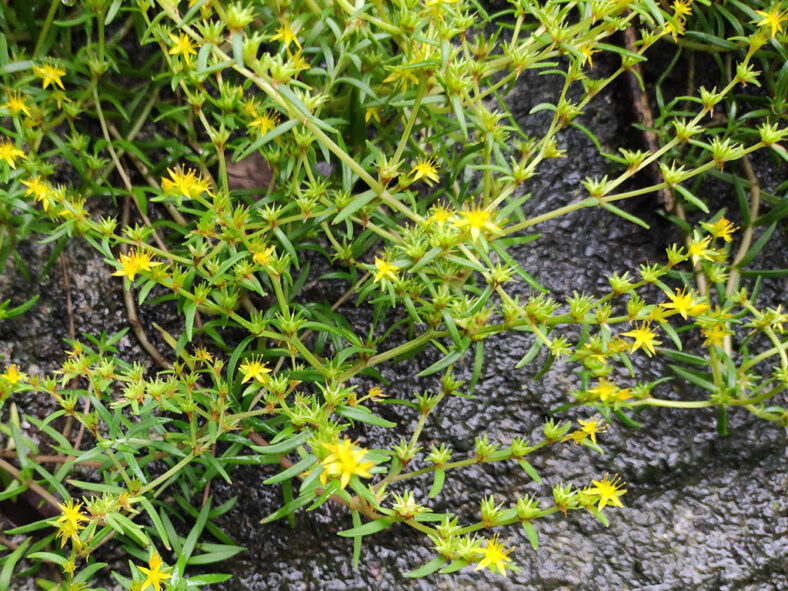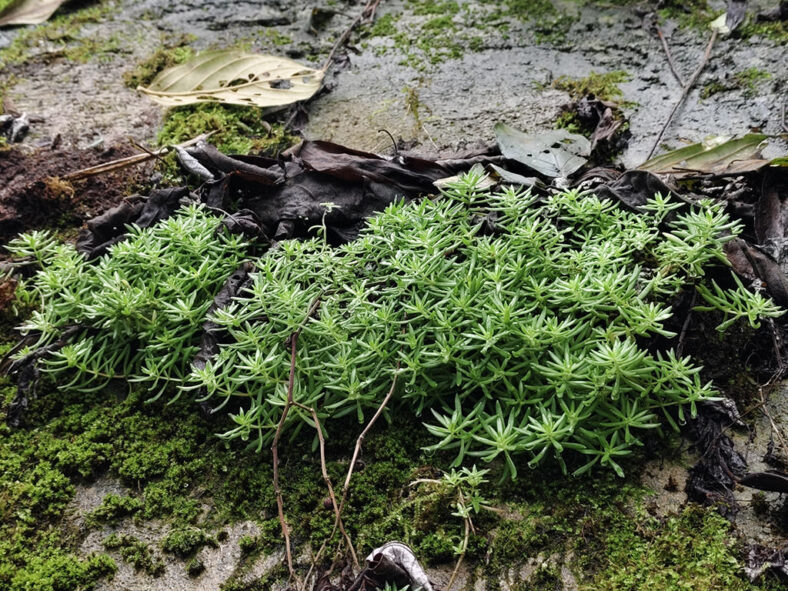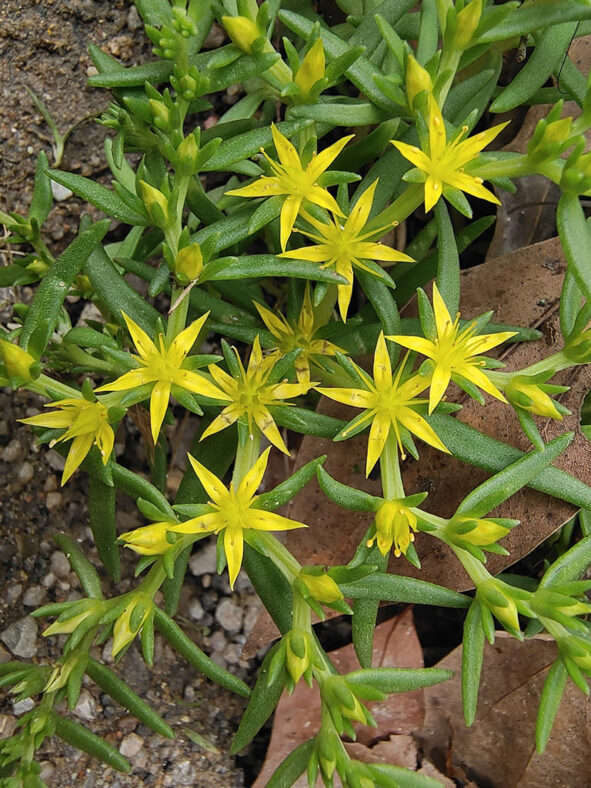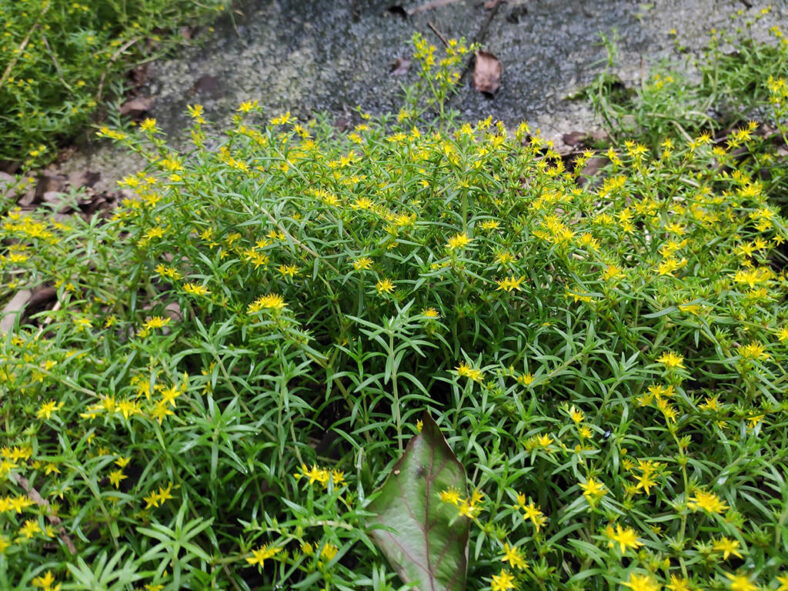Sedum lineare is a low-maintenance, sun-loving evergreen succulent that thrives where other plants do not. It has been recommended as an ideal plant for greening flat-roofed buildings in Shanghai, China, thanks to its tolerance of cold and drought, low soil requirements, and its roots' lack of penetrating ability.
Scientific Name
Sedum lineare Thunb.
Common Name(s)
Carpet Sedum, Linear Stonecrop Herb, Needle Stonecrop, Stonecrop
Synonym(s)
Sedum anhuiense, Sedum lineare var. albomarginatum
Scientific Classification
Family: Crassulaceae
Subfamily: Sempervivoideae
Tribe: Sedeae
Genus: Sedum
Etymology
The specific epithet "lineare" (pronounced "her-SOO-tum") means "to make straight or perpendicular" and refers to the shape of the leaves of this species.
Origin
Sedum lineare is native to southeastern China and Japan. It grows in low mountains, rn grocky rassy slopes, and pon lains.
Description
Sedum lineare is a mat-forming succulent with very slender, branching stems and light green or pale greenish-yellow leaves arranged in whorls of three or four. The fleshy stems can either be ascending or decumbent and can grow up to 12 inches (30 cm) long. The leaves are succulent, linear to narrowly lance-shaped, and can measure up to 1.2 inches (3 cm) in length and 0.08 inches (0.2 cm) in width.
From late spring to early summer, Sedum lineare produces yellow, star-shaped flowers with five petals. The inflorescences are lax, few- to many-flowered cymes of 1 to 3, sometimes forked, cincinni.

Cultivars of Sedum lineare
How to Grow and Care for Sedum lineare
Light: Sufficient light is most important for growing a healthy plant. Sedum lineare grows best in full sun for at least 6 hours a day, but tolerates some shade. Place the plant near a sunny window or use artificial lights when growing indoors.
Soil: This plant does not tolerate waterlogged soil, so good drainage is essential to prevent root rot. Use a commercially available succulent mix, or create your own.
Temperature: Sedum lineare has a good tolerance to heat and low temperatures. It is hardy in USDA Plant Hardiness Zones 7a-11b, which have average annual extreme minimum winter temperatures ranging from 0°F to 50°F (-17.8°C to 10°C).
Watering: From spring to fall, water thoroughly and let the soil dry out before watering again. During the winter, water the plant just enough to keep it from shriveling. When watering, avoid getting the leaves, stems, and flowers wet.
Fertilizing: Feed a water-soluble fertilizer diluted to half-strength during the growing season. However, feeding is unnecessary if you provide the plant with fresh soil annually.
Repotting: When Sedum lineare outgrows its current pot, repot it into a larger pot in spring. Make sure the soil is dry before you begin repotting.
Propagation: It is easy to propagate Sedum lineare by taking leaf or stem cuttings during the growing season or by sowing seeds in spring or summer.
Learn more at How to Grow and Care for Sedum.
Toxicity of Sedum lineare
Sedum lineare is not listed as toxic to people, but it can be mildly toxic to pets and children.
Links
- Back to genus Sedum
- Succupedia: Browse succulents by Scientific Name, Common Name, Genus, Family, USDA Hardiness Zone, Origin, or cacti by Genus
Photo Gallery
Click on a photo to see a larger version.


